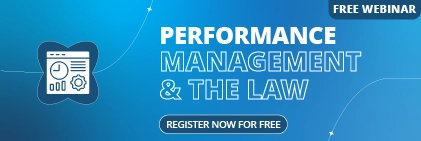What if a single strategic focus could reduce your workplace safety incidents by up to 70%? Research consistently demonstrates that organisations with highly engaged employees experience dramatically fewer workplace risks, accidents, and compliance failures.
Employee engagement differs fundamentally from employee satisfaction. Whilst satisfaction measures contentment, engagement represents emotional commitment and discretionary effort towards organisational goals. Engaged employees actively contribute to risk prevention and safety culture.
This connection becomes crucial in People Risk Management (PRM), where human factors drive most workplace incidents. The majority of organisational risks stem from employee behaviour, decision-making, and cultural factors.
Sentrient’s integrated HR, compliance, and GRC systems support Australian businesses in building this engagement-risk connection. Through comprehensive training management, incident reporting, and performance tracking, organisations can transform their workforce into proactive risk mitigators.
What Makes Employee Engagement Different from Employee Satisfaction?
Employee engagement operates on three distinct levels that directly impact workplace risk management. Unlike satisfaction surveys that measure contentment, engagement assessment reveals behavioural predictors of risk-related performance.
The three employee categories are:
1. Engaged Employees (30%): Emotionally invested, proactively identify hazards, consistently follow safety protocols
2. Not Engaged (50%): Complete assigned tasks but lack initiative in risk prevention
3. Actively Disengaged (20%): May deliberately ignore safety procedures, create additional risks
Engaged employees view workplace safety as personal responsibility rather than management obligation. They participate voluntarily in hazard identification, peer coaching, and continuous improvement initiatives.
With workforce expenses typically comprising 50-70% of operating budgets, engagement improvements deliver measurable returns through reduced incidents, lower turnover, and enhanced productivity.
Traditional satisfaction metrics measure past experiences, whilst engagement indicators predict future behaviours. This predictive capability makes engagement assessment invaluable for proactive risk management strategies.
How Does Science Explain the Connection Between Engagement and Risk Reduction?
Workplace psychology research provides scientific foundation for understanding engagement-risk relationships. Organisational behaviour studies demonstrate that employee engagement operates across four hierarchical levels that progressively reduce workplace risks.
The 4-level hierarchy model demonstrates progressive risk reduction benefits:
- Level 1 – Basic Needs: Clear expectations and adequate resources prevent fundamental safety failures.
- Level 2 – Individual Contribution: Recognition and development opportunities encourage proactive safety behaviours.
- Level 3 – Teamwork: Strong peer relationships enable effective safety communication and mutual accountability.
- Level 4 – Growth: Development opportunities maintain long-term engagement in safety excellence.
Statistical evidence reveals dramatic risk reduction at higher engagement levels. Organisations in the top quartile for engagement show approximately 70% fewer safety incidents, approximately 40% lower absenteeism, and approximately 40% fewer quality defects compared to bottom-quartile performers.
Manager’s role proves critical, accounting for 70% of variance in team engagement levels.
Where Does Employee Engagement Specifically Reduce Workplace Risks?
1. Operational and Safety Risks
Engaged employees actively participate in hazard identification and reporting systems. Rather than viewing safety protocols as burdensome requirements, they understand these procedures as protective measures.
Key operational risk reductions include:
- Proactive participation in Job Hazard Analysis (JHA) and Job Safety Analysis (JSA)
- Consistent adherence to Lockout Tagout (LOTO) procedures
- Voluntary reporting of near-misses and potential hazards
- Enhanced quality control and error prevention
Engaged teams demonstrate approximately 60% fewer safety incidents compared to disengaged counterparts.
2. People and Behavioural Risks
High engagement levels significantly reduce people-related risks that impact organisational stability. Engaged employees exhibit lower turnover rates, reducing recruitment costs and knowledge loss.
People risk reductions encompass:
- Approximately 60% reduction in employee turnover
- Approximately 40% decrease in absenteeism rates
- Enhanced peer-to-peer accountability systems
- Positive workplace culture development
3. Security and Compliance Risks
Employee engagement directly impacts security and regulatory compliance. Engaged employees understand that security protocols protect both personal and organisational interests.
Security improvements include:
- Reduced insider threat risks through emotional investment
- Enhanced data protection behaviours
- Improved regulatory compliance across operational areas
- Active participation in incident investigation processes
With 95% of successful cyberattacks attributed to human error, engaged employees provide crucial frontline defence.
4. Reputational and Financial Risks
Engaged employees serve as natural brand ambassadors, protecting organisational reputation through consistent service delivery.
Financial benefits include:
- Approximately 10% improvement in customer satisfaction scores
- Enhanced brand protection through employee advocacy
- Reduced social media and public relations risks
- Approximately 20% higher profitability and 18% higher productivity
What Is the 4 Pillar Model for Risk-Focused Engagement?
Pillar #1: Alignment
Leadership commitment and clear communication establish foundational alignment between engagement initiatives and risk management objectives. Core values integration ensures consistent messaging across all organisational levels.
Pillar #2: Capability
Role clarity and continuous development programs build employee capability for both engagement and risk management. Quality hiring processes select candidates aligned with safety-focused culture.
Pillar #3: Resources
Adequate tools, technology integration, and training management systems provide necessary resources for engaged risk management. AI-driven insights enable real-time monitoring and decision support.
Pillar #4: Motivation
Recognition systems and purpose-driven work environments sustain motivation for long-term engagement. Intrinsic motivation factors prove more sustainable than external reward systems alone.
What Barriers Prevent Engagement-Based Risk Management Success?
Common implementation barriers include siloed organisational structures that prevent cross-functional collaboration on engagement and risk initiatives. Departments often operate independently, missing opportunities for integrated approaches.
Management versus leadership gaps create additional challenges. Managers may focus on compliance checking whilst leaders develop engagement through inspiration and empowerment.
Resource allocation misalignment occurs when organisations invest heavily in safety equipment whilst neglecting engagement development. Communication breakdowns between levels prevent effective engagement strategy implementation.
How Can Organisations Implement Engagement-Based Risk Management?
1. Leadership and Cultural Transformation
Executive commitment and visible modelling establish credibility for engagement initiatives. Manager development programs equip supervisors with skills for building team engagement whilst maintaining safety focus.
2. Communication and Feedback Systems
Open communication channels enable regular dialogue about engagement levels and risk concerns. Quarterly engagement assessments provide more responsive insights than annual surveys.
3. Training and Development Integration
Risk-aware hiring practices select candidates with both technical capabilities and engagement potential. Comprehensive onboarding programs establish engagement expectations whilst covering essential risk management protocols.
4. Technology and Analytics
Real-time monitoring systems provide immediate insights into engagement levels and risk indicators. Mobile accessibility ensures field workers can participate fully in engagement and reporting systems.
Implementation Timeline and Milestones
| Phase | Duration | Key Activities | Success Metrics |
|---|---|---|---|
| Foundation | Months 1-3 | Leadership alignment, baseline assessment | Executive commitment, current state analysis |
| Pilot Program | Months 4-6 | Select team implementation, initial training | Pilot team engagement scores, early wins |
| Rollout | Months 7-12 | Organisation-wide deployment, manager training | Engagement improvement, incident reduction |
| Optimisation | Months 13+ | Continuous improvement, advanced analytics | Sustained performance, ROI achievement |
How Does Remote Work Affect Employee Engagement and Workplace Risks?
Hybrid and remote work environments require adapted engagement strategies that maintain connection whilst managing distributed team risks. Digital communication tools and protocols ensure remote employees remain engaged with safety initiatives.
Performance management in flexible environments requires new approaches that balance autonomy with oversight. Clear expectations and regular check-ins maintain engagement whilst ensuring risk management standards are met consistently.
Why Do Diversity and Inclusion Matter for Risk-Focused Engagement?
Multi-generational workforce engagement requires tailored approaches that address different communication preferences and motivation factors. Cultural diversity affects risk perception and safety communication effectiveness.
Inclusive safety practices ensure all employees understand and can participate fully in risk management activities regardless of background or experience.
How Do You Measure Success and ROI in Engagement-Based Risk Management?
Effective measurement requires tracking both engagement drivers and risk outcomes. Monitor leading indicators that predict performance alongside lagging indicators that confirm results.
Leading Indicators (Predictive):
- Engagement survey scores and participation rates
- Training completion and knowledge retention
- Voluntary safety reporting submissions
- Manager-employee feedback frequency
Lagging Indicators (Outcomes):
- Safety incident rates and severity
- Workers’ compensation claims and costs
- Employee turnover and exit themes
- Compliance audit scores
ROI Calculation:
- Investment: Training, technology, management time
- Savings: Reduced incidents, lower recruitment costs, decreased absenteeism
- Typical Returns: 3:1 ROI within 18-24 months, up to 5:1 after three years
Best Practices:
- Establish baseline metrics before implementation
- Conduct quarterly pulse surveys for real-time insights
- Use predictive analytics to identify risk patterns early
What Future Trends Will Shape Engagement and Risk Management?
Technology and workforce evolution are driving significant changes in how organisations approach engagement-based risk management.
AI and Technology Integration:
- AI-powered sentiment analysis for real-time engagement monitoring
- Predictive risk modelling using machine learning algorithms
- Mobile-first platforms for instant feedback and reporting
Evolving Workforce Expectations: Personalised engagement strategies based on individual preferences, flexible work arrangements requiring new monitoring approaches, and multi-generational communication preferences are reshaping traditional engagement models.
Enterprise System Integration: Modern platforms combine HR, safety, and compliance metrics into comprehensive dashboards. This creates cross-functional analytics for holistic risk visibility and real-time reporting across all organisational risk factors.
Key Implications: Organisations must invest in adaptive technologies whilst maintaining human-centred approaches. Success depends on balancing automation with personal connection to sustain meaningful engagement.
Conclusion: Transform Your Workplace Through Strategic Engagement
Employee engagement is an important factor in reducing workplace risks sustainably. Organisations that strategically develop engagement whilst focusing on risk management outcomes achieve superior safety performance, compliance results, and financial returns.
The evidence overwhelmingly supports engagement-based approaches to risk management. From approximately 70% reduction in safety incidents to significant improvements in compliance and culture, engaged employees consistently outperform their disengaged counterparts.
Sentrient’s comprehensive HR, compliance, and GRC solutions provide the technological foundation for engagement-driven risk management. Our platform integrates training management, incident reporting, performance tracking, and analytics to support your organisation’s journey towards risk-resilient engagement.
Australian businesses using Sentrient’s solutions gain access to legally endorsed compliance courses, automated reminder systems, and comprehensive reporting capabilities. Our cloud-based platform ensures rapid implementation whilst providing scalability for sustainable growth.
Ready to transform your workplace through strategic engagement? Contact Sentrient today to discover how our integrated solutions can help your organisation achieve both higher engagement and lower risks.
Frequently Asked Questions
1. What’s the difference between employee satisfaction and engagement?
Satisfaction measures contentment with current conditions, whilst engagement represents emotional commitment and discretionary effort. Engaged employees actively contribute to risk prevention beyond basic requirements.
2. How quickly can organisations see results from engagement initiatives?
Initial improvements often appear within 3-6 months, with significant risk reduction typically achieved within 12-18 months.
3. What role do managers play in risk-focused engagement?
Managers account for 70% of variance in team engagement levels. They directly influence daily risk management behaviours through coaching and recognition.
4. How do you measure ROI of employee engagement in risk reduction?
Compare engagement program costs against savings from reduced incidents, lower turnover, and improved productivity. Most organisations achieve positive ROI within 18-24 months.
5. What are the common barriers to implementing engagement-based risk management?
Common barriers include siloed organisational structures, leadership gaps, inadequate resource allocation, and poor communication systems.
6. How does remote work affect employee engagement and workplace risks?
Remote work requires adapted engagement strategies using digital tools. New risks emerge around isolation whilst traditional safety risks may decrease.
7. What technologies are most effective for monitoring engagement and risks?
Real-time analytics platforms, mobile-responsive systems, and AI-driven insights provide the most effective monitoring capabilities.
8. How often should organisations assess employee engagement levels?
Quarterly assessments provide optimal balance between responsiveness and survey fatigue. Continuous feedback mechanisms supplement formal assessments.





